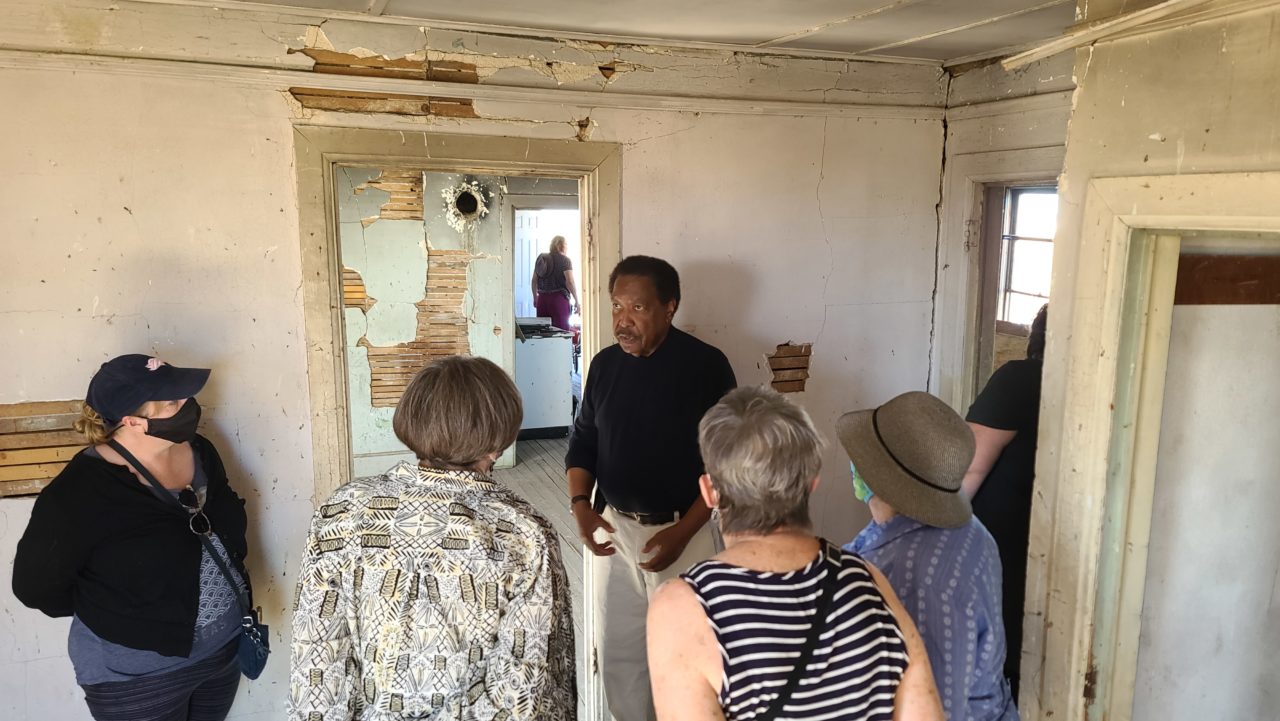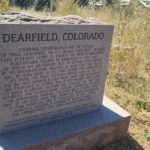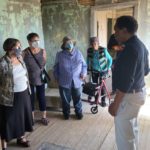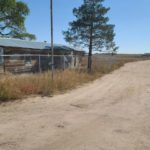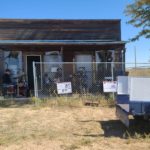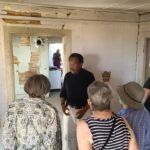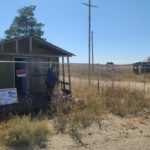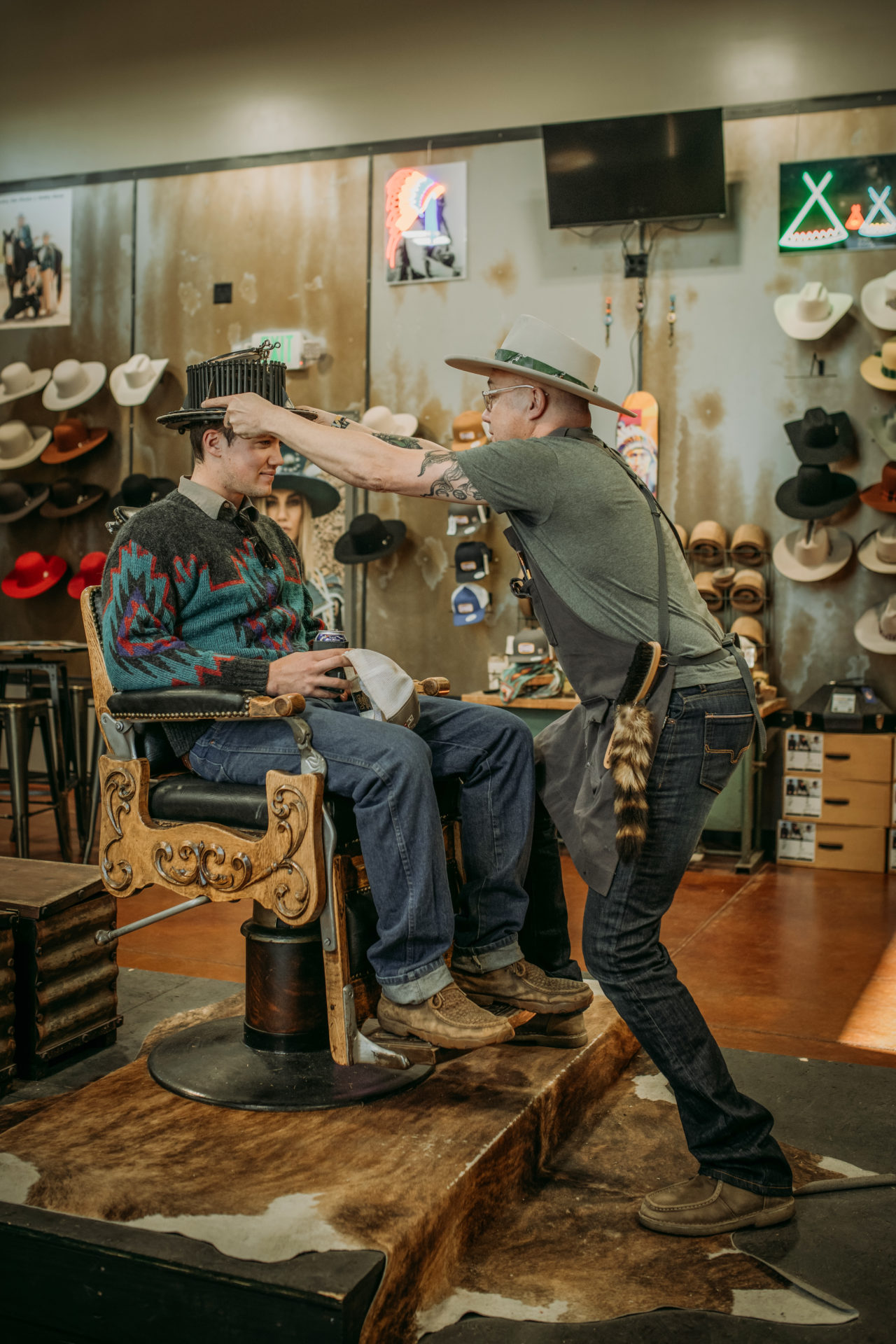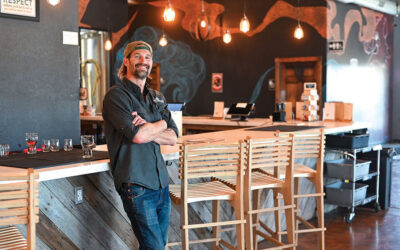By Jared Fiel
Driving east of Greeley on US 34, you see a lot of…well, nothing. The mostly one-lane highway usually hosts truckers and other drivers just trying to get between Greeley and Interstate 76 as fast as possible.
But along this lonely road is a place that was created with heart and hope and made successful through a lot of hard work as the largest Black homesteading settlement in Colorado and one of the largest in country.
Don’t blink or you will miss it.
The town of Dearfield was created in 1910 by a Black businessman named Oliver Touissant (folks called him O.T.) Jackson, following an idea from Booker T. Washington to create a place where Black people “should be given an opportunity to achieve a degree of independence through agriculture which they could not experience as long as they continued to sell their services to others for a daily wage.”
During its heyday, Dearfield (named because “it will be very dear to us,” as a doctor in town wrote) had somewhere between 300 and 500 residents. The streets were lined with dozens of homes, businesses, a fire station and two churches. There was a concrete block manufacturing plant, a lumber and coal yard, a boarding house, gas station and a hotel. They even had a baseball team.
It is hard to picture all of that today. Now all you can see are the remnants of the gas station and the diner (both owned by Jackson) from U.S. Highway 34. Down a dirt road that was Washington Ave., there is another crumbling house that was a hotel and residence for Jackson (his niece was the last resident of Dearfield and lived in that house from 1948 to 1973).
The rest of what was Dearfield is being slowly overtaken by the land that provided the community its greatest successes and, eventually, led to its downfall.
It is among these crumbling foundations, thick brambles and tall prairie grass where George Junne first discovered the rich history of the community, one that has grabbed him and forged him into being one of the leading advocates for Dearfield’s preservation. “This was a very successful community. They were peaceful,” he says. “I’m just proud to be walking around this area.”
Junne’s love of Dearfield came about quite by accident. In 1988, he was finishing his Ph.D. in Michigan when he came out to Denver to visit a friend. He was at the DMV in Denver and the Black clerk at the counter asked him if he had ever heard of Dearfield.
The clerk and his father had gone to Dearfield in the 1940s and 1950s. He told Junne about the community and a little of its history.
A few weeks later, Junne was driving on U.S. 34 and saw the small sign for Dearfield and decided to stop. That was all it took. Junne decided to take a full-time position at CU Boulder and later at University of Northern Colorado in Greeley, where he is now a professor in the Africana Studies Program in the College of Humantities and Social Sciences. He is also one of the leading experts on Dearfield history.
Junne helped bring in Paul Stewart of the Black American West Museum and Heritage Center, which is now working with UNC and the City of Greeley Museums to preserve what is left of Dearfield and add a visitor’s center.
The visitor’s center is planned to be placed in or around Jackson’s home. The hope is to continue to explore the area with UNC’s archaeology program to map out the entire community and help answer some of the questions about the people who lived there.
Much of the history is known. Nineteen settlers made their way to Dearfield in 1911. In just four years, the community grew to 44 homestead claim cabins. Much of the reason for the rapid growth is due to Mother Nature.
At that time, rains helped the resident grow big and abundant crops and the demand for those crops also grew during World War I. The community was so well off, they raised a tremendous amount of money doing war bond sales, Junne says.
The community hosted an annual Harvest Festival, which would bring residents from Greeley and Fort Morgan to the community for dancing. Many of the women in Dearfield worked in the homes of Greeley residents. Dearfield farmers would loan equipment to other farmers in Greeley. And there was even a famous fiddle player from Dearfield who often was invited to play in neighboring white communities.
“It was very inter-racial,” Junne says. “Which is even more surprising because this was also the time of when the KKK really rose to power in this area.”
Junne says reports from the Sheriff’s Department show there was very little crime or any other issues in Dearfield. “Everyone was proud of what they had accomplished, and nobody wanted to do anything to ruin it,” he says, adding that Dearfield’s success was heralded in Black newspapers all over the country.
While Booker T. Washington never came to Dearfield to see the result of his vision, his wife, son and grandson did, and they stayed in the hotel.
Mother Nature may have had a big part of making Dearfield, but she also was the main reason for its demise. In the 1920s, things started to dry out, leading to the 1930s Dust Bowl era that ravaged so much of the United States and devastated the farmers in Dearfield.
When the fields dried up, many of the residents left the community to seek employment elsewhere, but Jackson and a few others stayed to try to figure out how to make the community viable. For a short time, the town, situated between the “dry” towns of Greeley and Fort Morgan, billed itself as the fun escape nightclub area, the “Valley Resort,” hosting weekend dances. Jackson also tried to open a tuberculosis sanitarium for African Americans with no luck.
“He tried everything,” Junne says of Jackson, who worked for four different Colorado governors while his wife, Minerva, ran the town and was the unofficial mayor of the community.
So, why is it important to remember and celebrate what amounts to one of many ghost towns in Colorado? “There are a lot of racist ideas still today,” Junne says. “Dearfield is a shining example of what people, given the opportunity, can contribute to the community and to the economy.”
Learn more about Dearfield
The National Park Service site: nps.gov/places/dearfield-colorado.htm
NBC story: nbcnews.com/news/nbcblk/inside-dearfield-colorado-ghost-town-was-once-bustling-all-black-n975716
Black American West Museum: bawmhc.org
More about O.T. Jackson: en.wikipedia.org/wiki/Oliver_Toussaint_Jackson
Crabtree Brewing’s Dearfield Ale: crabtreebrewing.com/dearfield.html
Jared Fiel is a writer in Northern Colorado and has stopped many times in Dearfield and might have even tried the Dearfield Ale at Crabtree Brewing in Greeley which was created with a partnership with Junne.
- In 2010, a special marker was placed in front of the old diner in Dearfield designating its historical significance.
- University of Northern Colorado Professor George Junne talks to visitors to O.T. Jackson’s house during a recent Dearfield Day celebration.
- The Dearfield Gas Station was built by O.T. Jackson, whose name can still be seen on the beam as well as the name Masters which was a town a mile to the east which had a train stop and where all deliveries were made.
- The Dearfield Gas Station, left, is one of the few structures still standing in Dearfield. The dirt road is what used to be Washington Avenue in Dearfield.
- While O.T. Jackson’s house is now guarded by a fence to protect it, visitors are allowed to go through the structure during special events, like the recent Dearfield Days where a local band also performed.
- While all of the remaining buildings in Dearfield have suffered some vandalism and a lot of wear, visitors to O.T. Jackson’s house in Dearfield can see the remnants of many eras of life in the community.
- University of Northern Colorado Professor George Junne talks to visitors to O.T. Jackson’s house during a recent Dearfield Day celebration.


